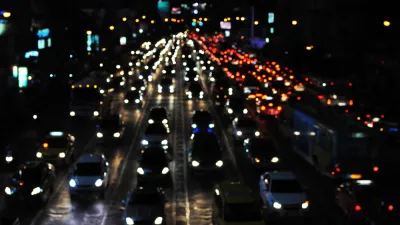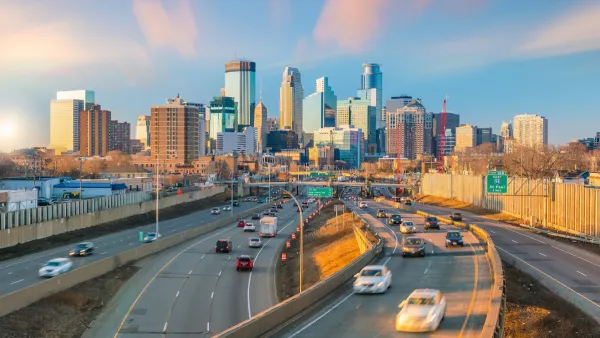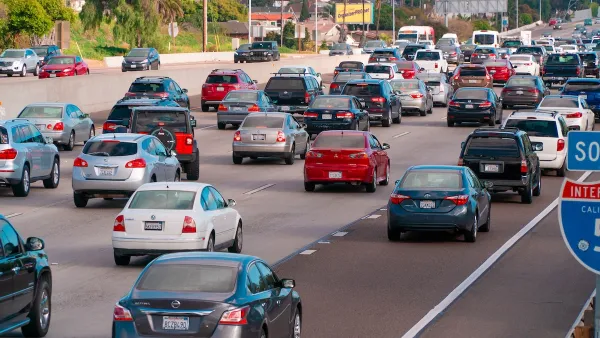Cities with rapidly growing populations and inadequate public transit systems are seeing more gridlock despite changes in commuting patterns and the rise of remote work.

Despite a slight reduction in traffic congestion in most U.S. cities since the start of the pandemic, roads in some of the country’s fastest-growing cities are experiencing more traffic. As Konrad Putzier explains in the Wall Street Journal, “Local roads, built decades ago for a much smaller population, are struggling to accommodate the new reality.”
The article details the potential losses caused by congestion, arguing that gridlock can make regions less productive by discouraging new employers and driving up housing costs in the denser areas nearer to city cores. A recent blog post by Todd Litman argues that congestion costs are not as high as estimated by some, and that other factors should more strongly affect transportation planning decisions.
Putzier’s article points to average traffic speeds as one measure of congestion, particularly in residential areas. However, Putzier does not mention whether traffic calming or other road safety initiatives could have contributed to slower speeds, which are shown to reduce the chance of fatal crashes. It even highlights one Miami-area driver who “said she started driving an SUV to get a higher-perched view of the gridlock in front of her.” Meanwhile, larger SUVs are contributing to higher rates of pedestrian deaths.
Putzier does note that improving public transit, which is often lacking in many Sunbelt cities, can alleviate congestion and make housing more accessible to more residents. However, he highlights complaints that “You’ll see an extra lane here or there, but by and large it just can’t keep up” without acknowledging that this is a tacit admission that building more roadways only induces traffic demand.
FULL STORY: Sunbelt Traffic Jams Are Frustrating Drivers and Threatening Growth

National Parks Layoffs Will Cause Communities to Lose Billions
Thousands of essential park workers were laid off this week, just before the busy spring break season.

Retro-silient?: America’s First “Eco-burb,” The Woodlands Turns 50
A master-planned community north of Houston offers lessons on green infrastructure and resilient design, but falls short of its founder’s lofty affordability and walkability goals.

Delivering for America Plan Will Downgrade Mail Service in at Least 49.5 Percent of Zip Codes
Republican and Democrat lawmakers criticize the plan for its disproportionate negative impact on rural communities.

Test News Post 1
This is a summary

Test News Headline 46
Test for the image on the front page.

Balancing Bombs and Butterflies: How the National Guard Protects a Rare Species
The National Guard at Fort Indiantown Gap uses GIS technology and land management strategies to balance military training with conservation efforts, ensuring the survival of the rare eastern regal fritillary butterfly.
Urban Design for Planners 1: Software Tools
This six-course series explores essential urban design concepts using open source software and equips planners with the tools they need to participate fully in the urban design process.
Planning for Universal Design
Learn the tools for implementing Universal Design in planning regulations.
EMC Planning Group, Inc.
Planetizen
Planetizen
Mpact (formerly Rail~Volution)
Great Falls Development Authority, Inc.
HUDs Office of Policy Development and Research
NYU Wagner Graduate School of Public Service





























